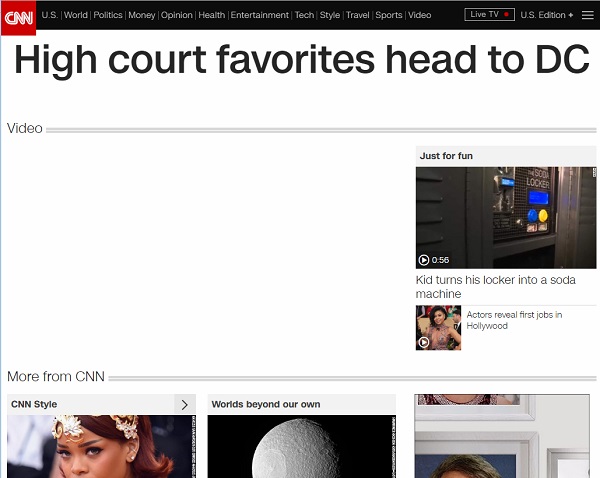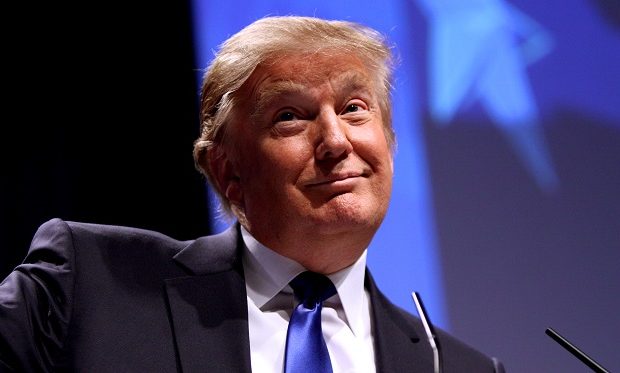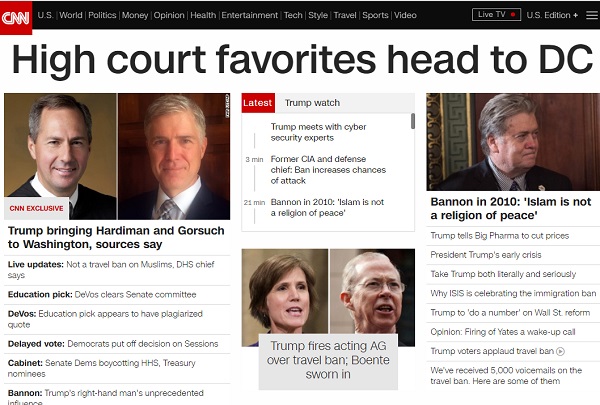Back when candidate Donald Trump‘s name started to become inescapable on the Internet, an enterprising programmer based at BrooklynHacker.com created a “Trump Filter“ that blocked out news associated with Trump.* Ironically, the same “Trump Filter” tool provides a bird’s eye view of Trump’s effectiveness in dominating the media landscape during his administration.
Led by former Breitbart editor Steve Bannon, the Trump team has historically tried to dominate the media. Visiting the New York Times homepage or CNN.com using the “Trump Filter” — and finding those pages totally blank — is one measure of success. That would mean that all the stories at the Times or CNN that day were to some degree about Trump (and therefore blocked by the “Trump Filter.”) If there is an unblocked story left — say a politically neutral story about an alligator in Florida — the Trump team can then issue a statement on it, inserting itself into that story, too, so even the alligator becomes partly a Trump story. Here is the CNN front page with the “Trump Filter” and without. Note almost all the content has been filtered, since nearly all of it considers Trump.
Here is CNN viewed with “Trump Filter”:

And here is CNN minutes later, viewed without “Trump Filter”:
Trump, who reportedly received more “free media” via news coverage than any presidential candidate in history, knows the value of owning media eyeballs, whether for misdirection or straight announcements. His campaign thrived on (and seemed to prove) the old idea that “all publicity is good publicity.” As long as the Trump name was front and center, it seemed not to matter why it was front and center. According to its own historical record, a Trump team that dominates the news wins. Here’s is the New York Times with the “Trump Filter” on:

*The filter idea wasn’t original — there was a Kim Kardashian filter that made news, though its users paradoxically couldn’t see that news.

